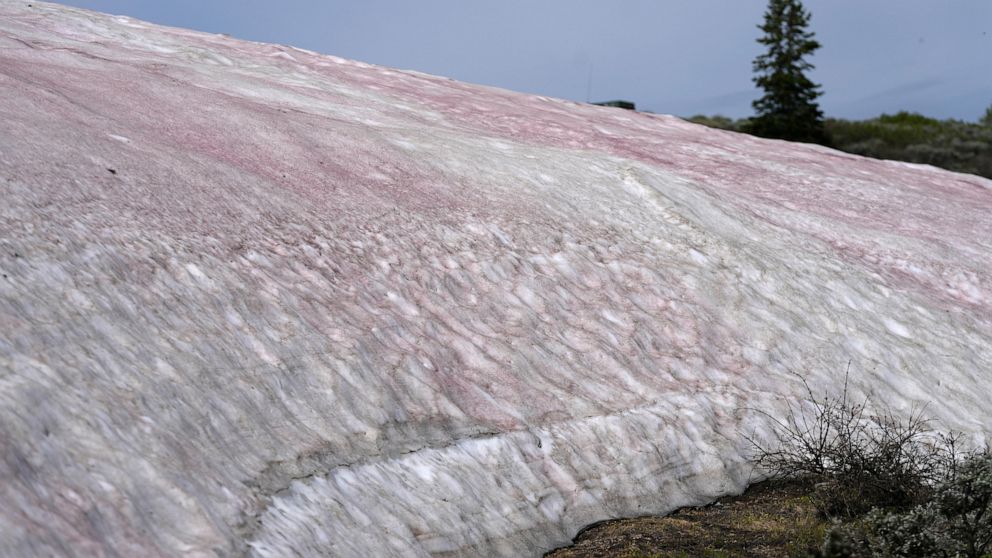Abnormally wet winter in Utah sparks interest in ‘Watermelon snow’ phenomenon
Utah is known for its stunning landscapes and outdoor recreational activities, but this winter, it has become the center of attention for a unique natural phenomenon – ‘Watermelon snow.’ The abnormally wet winter in the state has led to an increase in the occurrence of this intriguing phenomenon, captivating scientists and nature enthusiasts alike.
Watermelon snow, also known as pink snow or red snow, is a peculiar phenomenon that occurs when certain species of algae thrive in cold environments. These algae, known as Chlamydomonas nivalis, contain a red pigment called astaxanthin, which gives the snow its distinctive pink or reddish hue. This phenomenon is more commonly observed in high-altitude regions with cold temperatures and high levels of sunlight.
The recent wet winter in Utah has created ideal conditions for the growth of these algae. The excess moisture has provided the necessary water source for the algae to flourish, while the cold temperatures have allowed them to survive. Additionally, the high altitude and ample sunlight in Utah have contributed to the proliferation of watermelon snow across the state.
The appearance of watermelon snow not only adds a vibrant touch to the snowy landscapes but also raises questions about its ecological impact. While the phenomenon itself is harmless, it can have implications for the surrounding environment. The red pigment in the algae acts as a natural sunscreen, protecting them from harmful ultraviolet (UV) radiation. However, this pigment also absorbs heat from the sun, causing the snow to melt faster.
The accelerated melting of watermelon snow can have consequences for local ecosystems and water sources. As the snow melts at a faster rate, it can lead to increased runoff and affect the water supply in nearby areas. This phenomenon has caught the attention of scientists who are studying its potential impact on water resources and the delicate balance of mountain ecosystems.
Watermelon snow has fascinated researchers for centuries. The phenomenon was first documented by Aristotle in the fourth century BC, and its occurrence has been observed in various parts of the world, including the Arctic, Antarctica, and high-altitude regions of the Alps. However, the recent surge in interest in Utah’s watermelon snow has provided scientists with an opportunity to study it more closely.
Scientists are using advanced techniques such as remote sensing and satellite imagery to monitor the extent and distribution of watermelon snow across Utah. They are also collecting samples to analyze the algae’s genetic makeup and understand its adaptations to extreme environments. This research could provide valuable insights into the resilience of life forms in harsh conditions and contribute to our understanding of climate change and its impact on ecosystems.
For nature enthusiasts, witnessing watermelon snow in person is a unique experience. The vibrant pink or red hues against the white snow create a surreal and ethereal landscape. However, it is essential to remember that watermelon snow is fragile, and trampling on it can disrupt the delicate balance of the ecosystem. It is crucial to appreciate this phenomenon from a distance and avoid causing any harm.
As Utah continues to experience an abnormally wet winter, the prevalence of watermelon snow is likely to persist. This phenomenon serves as a reminder of the intricate relationship between climate, environment, and the fascinating adaptations of organisms. By studying watermelon snow, scientists hope to gain a deeper understanding of our planet’s complex ecosystems and contribute to their preservation for future generations to enjoy.



